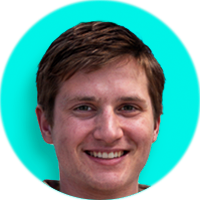Summary
But does putting in the hours to become a LinkedIn influencer truly pay off? Does the following you have on LinkedIn correlate with how quickly you climb the corporate ladder?
To find out, we analysed 17,561 LinkedIn profiles of employees in the largest American and British companies by market capitalization, noting their seniority and career timeline. And the results were decisive: the larger the following you have, the more likely–and more quickly–you are to win that big promotion.
Key findings
- Those promoted within a year to two years had almost double the LinkedIn followers of someone whose promotion took 10 years or more (1,047 compared to 538).
- Promoted employees have an average of 9.2% more LinkedIn followers than employees who have never been promoted.
- The average vice president has 1,880 LinkedIn followers–almost four times the number of LinkedIn followers of an assistant (475), the lowest position in the study.
- Employees promoted to Vice President had an average of 1,000 more followers than senior position employees (1,880 compared to 880).
Those who get promoted have an average of 9.2% more LinkedIn followers than those who don't.
The most followed man on LinkedIn was also the world's wealthiest man for 18 years. Bill Gates has 35,734,309 followers and counting, but is there a connection between your wealth–or ability to get promoted–and your own follower count?
The average promoted employee in the study has a far more modest 886 followers. Using this figure as a benchmark, we can see how many followers the average person has per company, per seniority, and whether those promoted more quickly have more or fewer followers than average.

An average employee in the study had 886 followers, whereas an employee who had never been promoted had 865–80 fewer followers than employees who had been promoted and had an average of 945 followers.
This means that an employee who had at least one promotion has 9.2% more LinkedIn followers than an employee who has never been promoted.
Those promoted within a year to two years had the most followers–with an average LinkedIn following of 1,047.
We've seen that on average, someone with more followers is more likely to be promoted, but do those with more followers get promoted quicker–and by how much?
Those promoted within a year to two years had more followers than anyone else, with an average following of 1,047–that's 1.9 times more than someone who had taken 10 or more years to be promoted, who had the smallest average following at 538.
Although there were some notable fluctuations (for example, those promoted within a year or less had 895 followers), generally, those who were promoted in less time had more LinkedIn followers.

The average vice president has 1,880 LinkedIn followers.
With time comes experience, and with experience comes connections. As you build your professional network over years of work, it's no surprise that an employee promoted to vice president from within the company has almost four times more connections than the average employee promoted to assistant does (1,880 compared to 475).
A consistent positive correlation was found between a higher LinkedIn following and job position–especially further up the career ladder. The most notable jump in LinkedIn followers is between a senior to vice president employee–with a difference of 1,000 followers.

Conclusion
The data clearly draws a correlation between the number of followers you have and the rate and likelihood you will be promoted in a large corporation. But is this a conscious bias? Does amassing LinkedIn followers guarantee success, or is it just a by-product of time and influence?
Successful and influential before LinkedIn was even established, Bill Gates, Richard Branson, and the other most-followed people on LinkedIn are unlikely to credit their social media profiles for their stratospheric success. Their influence was well established before and outside of LinkedIn.
But, for those who know how to play the game, create engaging content, and interact proactively, it is entirely possible for LinkedIn to propel your career.
Not only could one of these followers or connections prove useful, but if used strategically, a large social media presence creates what in psychology is called a “halo effect.” Because someone has many followers, we also presume they must be successful, smart, and good at their job (even if none of those things are true).
Methodology
The largest American and British companies by market capitalization were chosen from this source:
https://companiesmarketcap.com/usa/largest-companies-in-the-usa-by-market-cap/#google_vignette
https://companiesmarketcap.com/united-kingdom/largest-companies-in-the-uk-by-market-cap/
The career history and number of followers of about 950-1,000 employees per company were then analyzed from Linkedin in both the UK and the US. In the cases where there were not enough employee profiles to analyse, the next largest company was then chosen from the list. In total 19 companies were analysed.
The study also categorised these job types into different seniority levels:
- Assistant
- Junior
- Associate
- Manager
- Senior
- Vice President
©️©️ This work is licensed under a Creative Commons Attribution-ShareAlike 4.0 International License.





